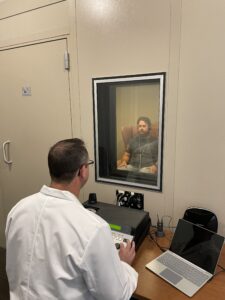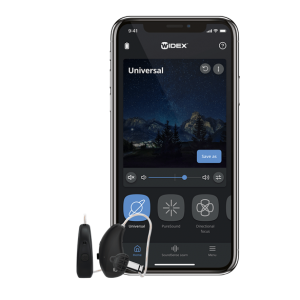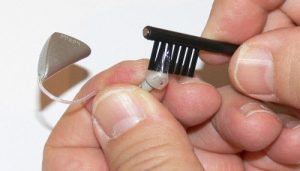Sensorineural hearing loss (SNHL) is a prevalent condition that affects a significant number of individuals worldwide. It refers to hearing loss caused by the pathology of the cochlea, auditory nerve, or central nervous system. Understanding the pathophysiology, diagnostic evaluation, and management of SNHL is crucial for otolaryngologists, audiologists, hearing instrument specialists, and other healthcare professionals involved in the care of patients with hearing loss. In this article, we will explore the essential aspects of SNHL, including its pathophysiology, diagnostic tests, common underlying conditions, and the importance of an interprofessional approach in the evaluation and treatment of patients.
Pathophysiology of Sensorineural Hearing Loss
Sensorineural hearing loss arises from damage to the hair cells within the inner ear, the vestibulocochlear nerve, or the central processing centers of the brain. Unlike conductive hearing loss, which results from the inability of sound waves to reach the inner ear, SNHL involves structural abnormalities, metabolic dysfunctions, vascular interference, or overcrowding of the basilar membrane. These factors can disrupt the transmission and transduction of sound signals, leading to hearing impairment.

The cochlea, a crucial component of the inner ear, plays a vital role in sound conduction. It consists of the outer ear, middle ear, and inner ear. When sound reaches the cochlea, it undergoes amplification by the outer hair cells and electrochemical transduction by the inner hair cells. The basilar membrane, a frequency-specific structure within the cochlea, responds differently to various frequencies. Higher frequencies stimulate the base of the basilar membrane, while lower frequencies stimulate the apex.
Diagnostic Evaluation of Sensorineural Hearing Loss
Accurate diagnosis of SNHL requires a comprehensive audiometric evaluation conducted by a multidisciplinary team. Otolaryngologists, audiologists/hearing instrument specialists, radiologists, and speech/language therapists collaborate to assess patients with new-onset hearing loss thoroughly. Diagnostic tests commonly employed include:
– Pure-tone audiometry: Measures the patient’s hearing threshold across various frequencies.
– Speech audiometry: Evaluates the patient’s ability to understand speech at different volumes.
– Otoacoustic emissions (OAEs): Assesses the function of the outer hair cells by measuring the sound generated in response to stimuli.
– Auditory brainstem response (ABR): Records electrical activity in the auditory nerve and brainstem to assess the transmission of sound signals.
These diagnostic tests aid in determining the severity, configuration, and potential underlying causes of SNHL.
Common Conditions Associated with Sensorineural Hearing Loss
Several factors can contribute to the development of SNHL. The most common conditions associated with sensorineural hearing loss include:
1. Congenital Causes: SNHL can be syndromic or nonsyndromic in nature, meaning it can occur as part of a genetic condition or on its own.
2. Presbycusis: Age-related hearing loss, characterized by a gradual decline in hearing sensitivity, particularly for high-frequency sounds.
3. Noise-Induced Hearing Loss: Prolonged exposure to loud noises can damage the hair cells in the cochlea, leading to permanent hearing loss.
4. Head Injury: Trauma to the head can result in SNHL due to damage to the cochlea or auditory nerve.
5. Meniere’s Disease: An inner ear disorder characterized by episodes of vertigo, tinnitus, and fluctuating hearing loss.
6. Ototoxicity: Certain medications, such as aminoglycoside antibiotics and some chemotherapeutic agents, can cause damage to the hair cells and result in SNHL.
7. Systemic Conditions: Conditions like meningitis and diabetes can affect the blood supply to the cochlea and contribute to sensorineural hearing loss.
8. Vestibular Schwannoma: Also known as an acoustic neuroma, it is a benign tumor that grows on the vestibulocochlear nerve, leading to hearing loss and balance problems.
9. Other Causes: Autoimmune disorders, barotrauma (pressure-related damage), and perilymphatic fistula (an abnormal connection between the middle and inner ear) can also result in SNHL.
It is important for healthcare professionals to identify and address the underlying cause of SNHL to provide appropriate management and treatment options to patients.
Interprofessional Approach in the Evaluation and Treatment
The evaluation and management of patients with SNHL require an interprofessional approach involving various healthcare professionals. Collaboration between otolaryngologists, audiologists, radiologists, hearing instrument specialists, and speech/language therapists is crucial for accurate diagnosis, comprehensive evaluation, and tailored treatment plans.
Otolaryngologists play a key role in diagnosing the underlying cause of SNHL through detailed patient history, physical examination, and interpretation of diagnostic tests. They may recommend further investigations or interventions based on the findings.

Audiologists or hearing instrument specialists, specialize in assessing hearing, hearing loss, and providing rehabilitation services. They conduct diagnostic tests, interpret results, and offer hearing aids or other assistive devices to improve communication and quality of life for individuals with SNHL.
Radiologists contribute by interpreting imaging studies, such as magnetic resonance imaging (MRI) or computed tomography (CT) scans, to identify any structural abnormalities or tumors that may be causing SNHL.
Speech/language therapists assist patients with SNHL in developing communication strategies, improving speech perception, and maximizing their ability to interact effectively in various listening environments.
An interprofessional team approach ensures a comprehensive and holistic evaluation of patients with SNHL, leading to appropriate treatment plans tailored to the individual’s needs.
Conclusion
Sensorineural hearing loss is a common condition that requires thorough evaluation and management by a multidisciplinary team. Understanding the pathophysiology, conducting diagnostic tests, identifying underlying conditions, and adopting an interprofessional approach is essential for providing optimal care to patients with SNHL. By working together, otolaryngologists, audiologists, hearing instrument specialists, radiologists, and speech/language therapists can effectively evaluate, diagnose, and treat individuals with SNHL, helping them regain their quality of life and improve their communication abilities.
By prioritizing early detection, accurate diagnosis, and comprehensive treatment, healthcare professionals can make a significant impact on the lives of individuals with sensorineural hearing loss. With ongoing advancements in research and technology, the outlook for managing SNHL continues to improve, offering hope for individuals seeking better hearing health and overall well-being.




